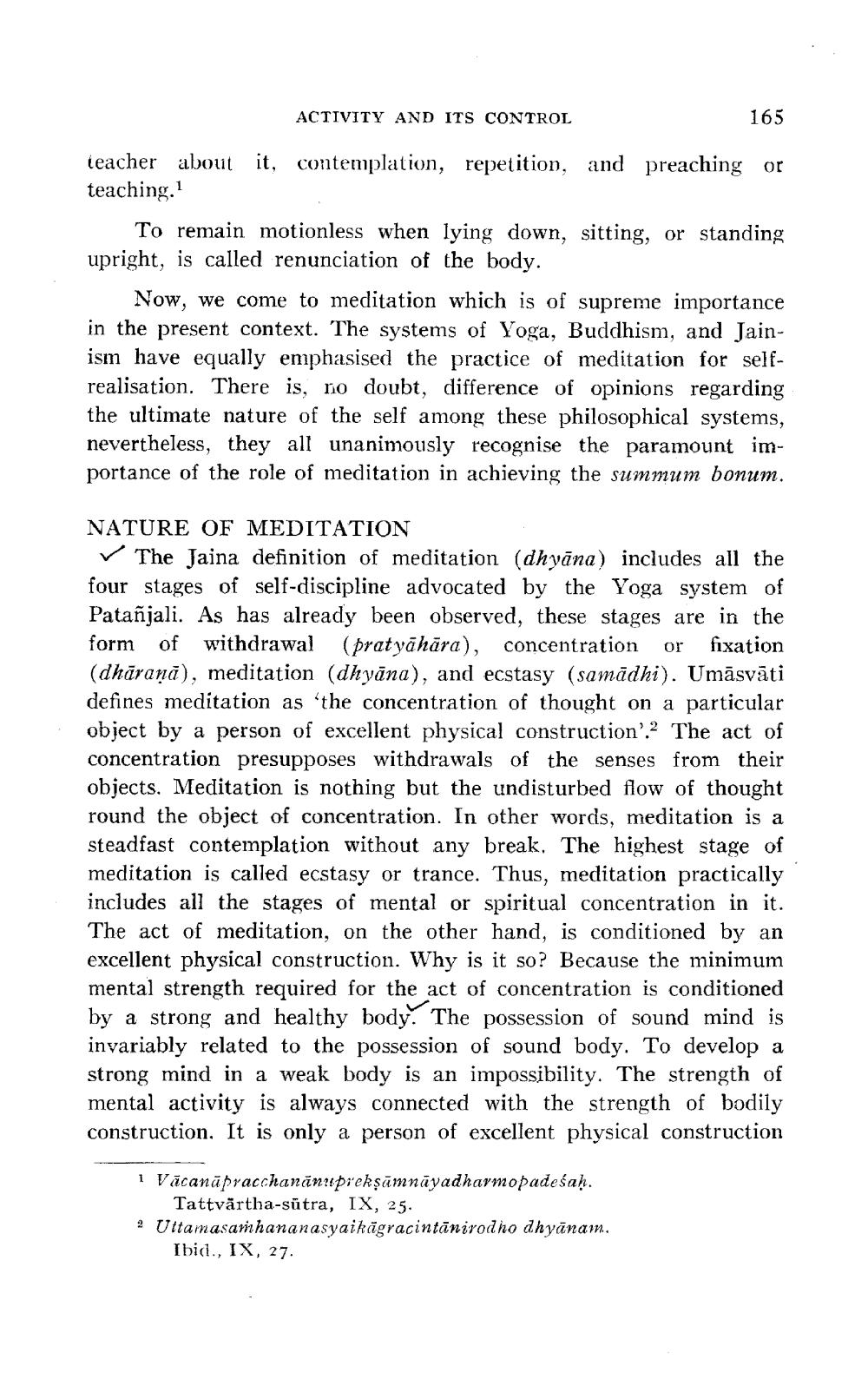________________
ACTIVITY AND ITS CONTROL
165
teacher about it, contemplation, repetition, and preaching or teaching,
To remain motionless when lying down, sitting, or standing upright, is called renunciation of the body.
Now, we come to meditation which is of supreme importance in the present context. The systems of Yoga, Buddhism, and Jainism have equally emphasised the practice of meditation for selfrealisation. There is no doubt, difference of opinions regarding the ultimate nature of the self among these philosophical systems, nevertheless, they all unanimously recognise the paramount importance of the role of meditation in achieving the summum bonum.
NATURE OF MEDITATION
✓ The Jaina definition of meditation (dhyāna) includes all the four stages of self-discipline advocated by the Yoga system of Patañjali. As has already been observed, these stages are in the form of withdrawal (pratyāhāra), concentration or fixation (dhāraņā), meditation (dhyāna), and ecstasy (samādhi). Umāsvāti defines meditation as the concentration of thought on a particular object by a person of excellent physical construction. The act of concentration presupposes withdrawals of the senses from their objects. Meditation is nothing but the undisturbed flow of thought round the object of concentration. In other words, meditation is a steadfast contemplation without any break. The highest stage of meditation is called ecstasy or trance. Thus, meditation practically includes all the stages of mental or spiritual concentration in it. The act of meditation, on the other hand, is conditioned by an excellent physical construction. Why is it so? Because the minimum mental strength required for the act of concentration is conditioned by a strong and healthy body. The possession of sound mind is invariably related to the possession of sound body. To develop a strong mind in a weak body is an impossibility. The strength of mental activity is always connected with the strength of bodily construction. It is only a person of excellent physical construction
1 Vācanăpracchanānu preksāmnāyadharmopadeśaḥ.
Tattvārtha-sūtra, IX, 25. 2 Uttamasamhananasyaikāgracintānirodno dhyānam.
Ibid., IX, 27.




